Sweltering deserts, sun-baked savannas, and sizzling forests—some wild cats are absolute champions at surviving the hottest places on Earth! Their secret weapons? Everything from clever behaviors to jaw-dropping physical features. Ready to meet the coolest cats of the world’s hottest habitats? Let’s jump into our gallery of 9 big cats built for blazing heat—plus a few fascinating feline extras!
The Lion: King of the Sun-Drenched Savannah

Lions spend much of their day basking under the scorching African sun, strategically conserving energy for their more active, nocturnal hunts. Their golden coats serve as natural camouflage and protection, reflecting sunlight much like built-in sunscreen. To beat the heat, they seek out the shade of trees or tall grasses and often snooze for hours, minimizing movement to avoid overheating. When temperatures soar, lions cleverly regulate their body heat by panting—an unexpectedly humble trait for such majestic predators.
The Cheetah: Sprinting Across Scorching Plains
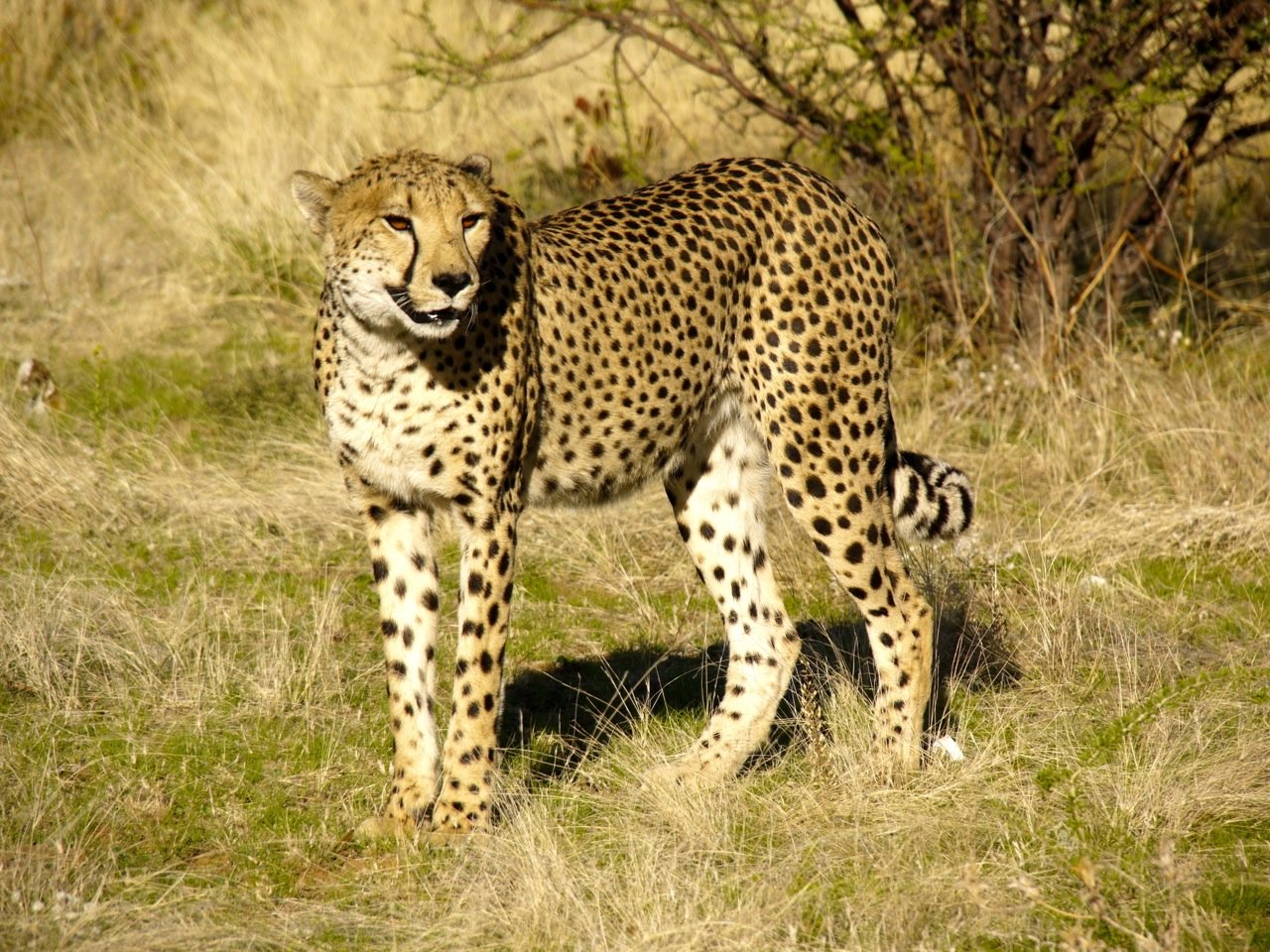
Cheetahs are the undisputed speed champions of the animal kingdom, often launching high-speed chases under the unforgiving glare of the midday sun. Their sleek, aerodynamic bodies are built not just for speed, but also for efficient heat release, helping them avoid overheating during intense sprints. The distinctive black “tear marks” beneath their eyes aren’t just for looks—they reduce sunlight glare and enhance focus, much like natural sunglasses. It’s the ultimate combination of power, precision, and built-in performance gear, all in one graceful predator.
The Jaguar: Shadow Hunter of the Steamy Tropics

Jaguars reign over the steamy jungles of Central and South America, thriving in the intense heat and dense vegetation. Unlike most of their feline cousins, these powerful predators are true water lovers, often plunging into rivers not just to cool down, but to stalk prey with stealth and precision. Their muscular build and strong jaws make them formidable hunters both on land and in water. With their bold spots and unmatched adaptability, jaguars are the undisputed aquatic kings of the cat world.
The Leopard: Master of Hot and Hidden Spots

Leopards are masters of survival, thriving in a remarkable variety of environments—from the arid African savannas to the lush, humid jungles of Asia. Their beautifully spotted coats act as natural camouflage, blending seamlessly with patches of light and shadow while also helping regulate body temperature. To beat the heat and protect their hard-earned meals, leopards often haul their prey high into the trees, turning branches into shady dining spots. This clever combination of stealth, strength, and adaptability makes them one of the most versatile big cats on the planet.
The Caracal: Desert Acrobat with Giant Ears
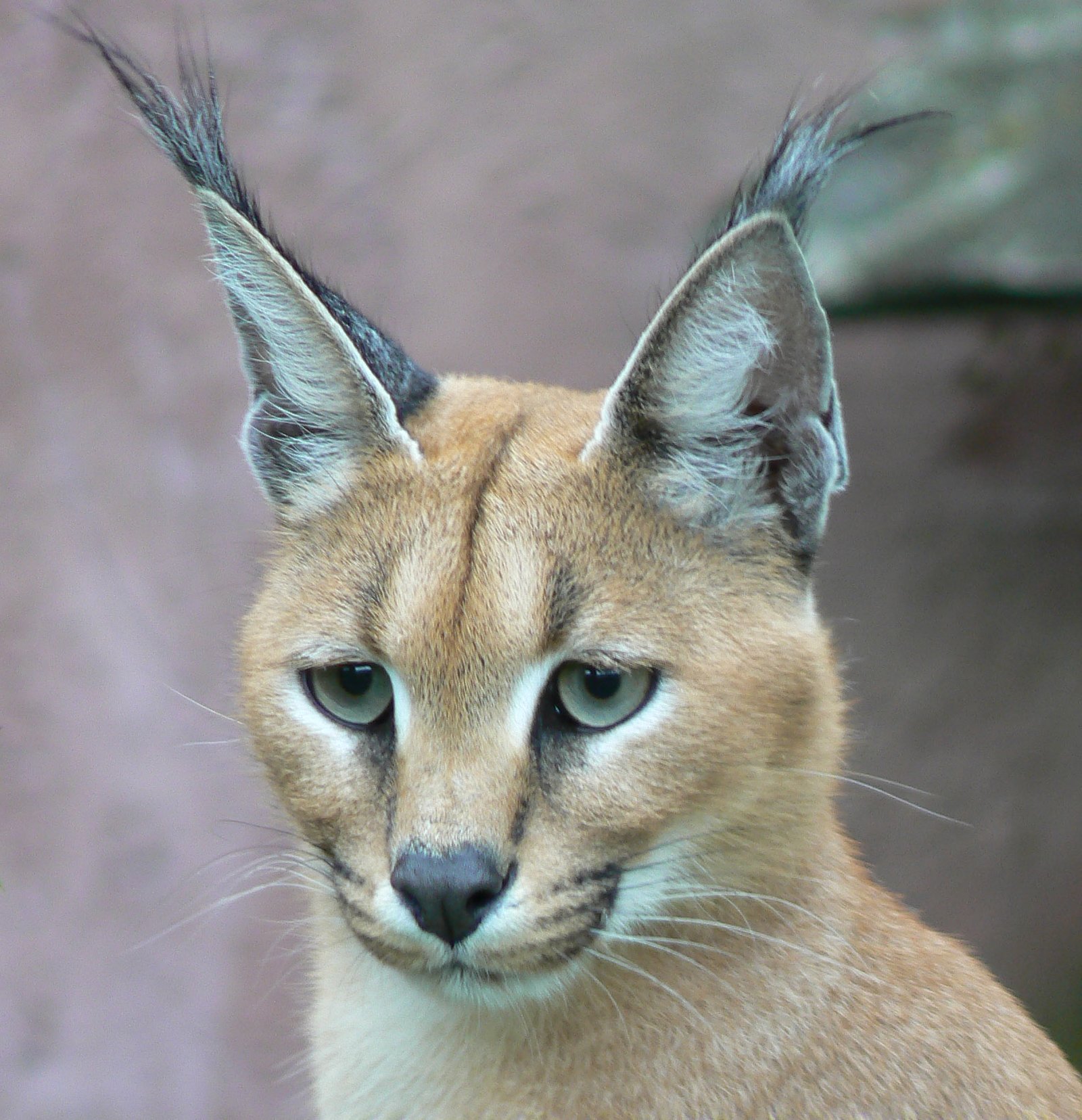
Caracals are sleek desert specialists, perfectly adapted to survive in scorching, arid environments. Their tall, tufted ears aren’t just stylish—they act like built-in cooling systems, radiating excess body heat to keep them comfortable in extreme temperatures. With sandy-colored fur that reflects the sun’s harsh rays, these agile cats stay both cool and camouflaged. And when it comes to hunting, caracals are aerial acrobats, launching up to 10 feet into the air to snatch birds in flight—like a high-stakes game of hot potato in the heart of the desert.
The Serval: Tall, Spotted, and Heat-Savvy
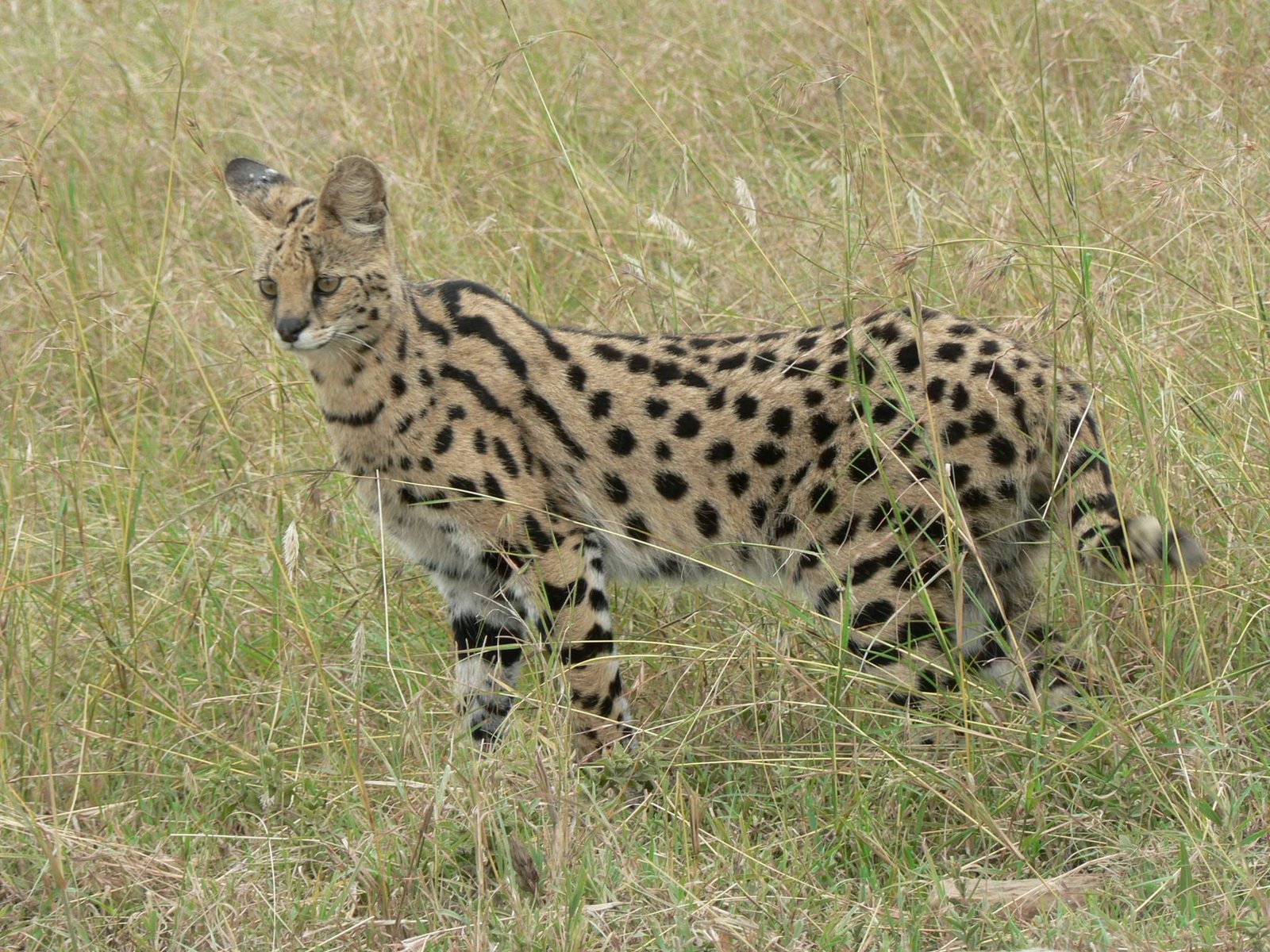
With their extra-long legs and oversized, radar-like ears, servals are perfectly engineered for life in the sun-drenched African savanna. Their tall build allows them to move effortlessly through high grasses, while their rotating ears detect the faintest rustles of hidden prey—and even catch passing breezes to help cool them down. Their pale, spotted coats reflect sunlight, keeping them cool as they launch into explosive, high-precision pounces. Agile, alert, and heat-adapted, servals are the stealthy, sun-smart hunters of the grasslands.
The Sand Cat: Secretive Survivor of Shifting Sands

Sand cats may be small, but they’re tough survivors in some of the planet’s hottest, driest deserts, where daytime temperatures regularly soar above 100°F. Their dense, pale fur acts like a built-in sunshield, reflecting harsh rays, while the thick fur on their paws works like natural slippers, insulating them from the burning sand. Remarkably self-sufficient, sand cats rarely need to drink—drawing nearly all the moisture they need from the prey they catch. With their wide-set ears and low-slung bodies, they’re perfectly adapted to thrive where few other mammals dare to roam.
The Puma: Heat-Tolerant Ruler of the Americas

Pumas—also known as cougars or mountain lions—are incredibly versatile predators, roaming landscapes that range from scorching deserts to dense, tropical jungles. These elusive cats are crepuscular, meaning they prefer to hunt at dawn and dusk, skillfully avoiding the sweltering heat of midday. Their short, sleek tan coats not only help regulate body temperature but also provide perfect camouflage against sun-bleached rocks and dry terrain. Silent, powerful, and heat-savvy, pumas are the ultimate stealth hunters of varied and challenging climates.
The Asiatic Lion: Enduring India’s Fiery Forests

Asiatic lions make their home in the hot, dry landscapes of India’s Gir Forest, where survival means adapting to extreme heat. Unlike their African relatives, they sport shorter, sparser manes—a clever evolutionary tweak that helps them shed heat more efficiently. During the hottest parts of the day, they lounge in the shade, conserving energy and avoiding the sun’s harsh glare. Expert navigators of their arid environment, these lions are also skilled at locating hidden waterholes, making them true heat-hardened kings of the Indian wild.
Clouded Leopard: Dappled for Dappled Sun
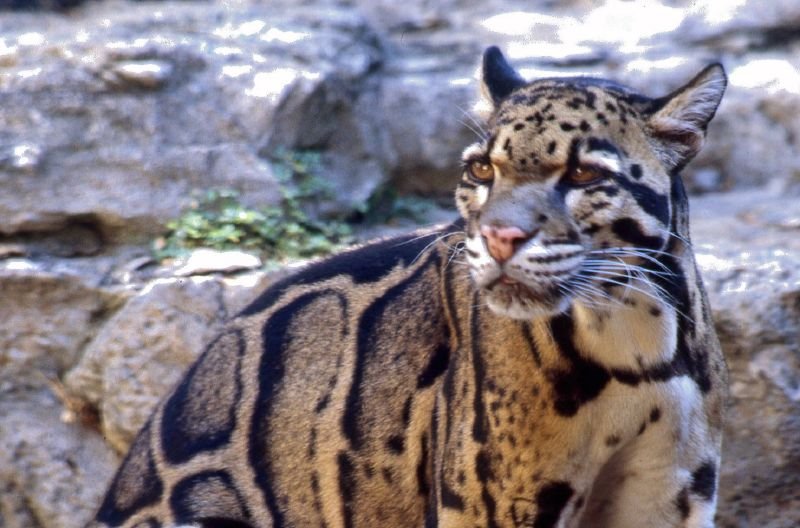
Despite their misty name, clouded leopards thrive in the warm, humid forests of Southeast Asia, where sunlight filters through dense canopies in ever-shifting patterns. Their stunning, cloud-shaped markings act as perfect camouflage, blending seamlessly with dappled light to keep them both hidden from predators and cool in the thick jungle heat. Agile climbers, they spend much of their time in the treetops, where the air is slightly cooler and the cover provides shade. With stealth, grace, and jungle-honed adaptations, clouded leopards are masters of the steamy forest heights.
Ocelot: Little Heat-Hardy Hunter

Ocelots are remarkably adaptable felines, flourishing in both lush tropical rainforests and arid scrublands across the Americas. Their sleek, short coats are not just beautiful—they’re ideal for releasing body heat, helping them stay cool in warm climates. Primarily nocturnal, ocelots hunt under the cover of darkness when temperatures drop, conserving energy and avoiding the daytime heat. It’s a clever survival strategy that combines stealth, timing, and heat-smart instincts.
Jungle Cat: Sun-Loving Stalker

Jungle cats are well-adapted residents of the hot grasslands, wetlands, and reed beds stretching across Asia and parts of Africa. Their long legs give them an athletic edge, allowing them to leap effortlessly through tall grass in pursuit of prey or to simply stay cool above the sun-baked ground. Their sandy-colored coats not only reflect sunlight but also help them blend into dry, golden landscapes. Unlike many other wild cats, jungle cats are often active during the day, confidently basking in the sun like seasoned sunbathers of the wild.
Lynx: Cool Cat in Warm Woods

Some lynx species, such as the Eurasian lynx, are impressively adaptable and can tolerate warmer climates despite their reputation as cold-weather cats. As the seasons shift, they shed their dense winter coats in favor of lighter, sleeker summer fur that helps them stay cool. When the heat rises, lynxes retreat into shady forest cover or lounge near cool mountain streams, using the landscape to regulate their body temperature. With their silent steps and sharp senses, they remain elusive and elegant, even in the summer sun.
Tiger: Striped for Sun and Shade

Tigers are often associated with dense jungles, but many thrive in hot, dry forests where survival demands clever heat management. Their iconic orange-and-black stripes act as natural camouflage, breaking up their outline in the shifting patterns of sunlight and shadow. Unlike most big cats, tigers are passionate swimmers, often lounging in rivers or ponds for hours to escape the heat and stay refreshed. With their powerful builds and water-loving ways, they’re both fierce and heat-savvy rulers of their sun-drenched domains.
Bobcat: Adaptable Heat Handler

Bobcats are incredibly versatile predators, ranging from the snowy forests of Canada to the sunbaked deserts of Mexico, and adapting effortlessly to every environment in between. Their dappled, spotted coats provide excellent camouflage, helping them vanish against rocky terrain and sunlit underbrush. To beat the heat, bobcats rest in shaded burrows, caves, or dense shrubs during the hottest hours, conserving energy for dusk and dawn when they’re most active. This combination of stealth, resilience, and climate-savvy behavior makes them one of North America’s most successful wild cats.
Geoffroy’s Cat: Petite but Powerful in the Heat
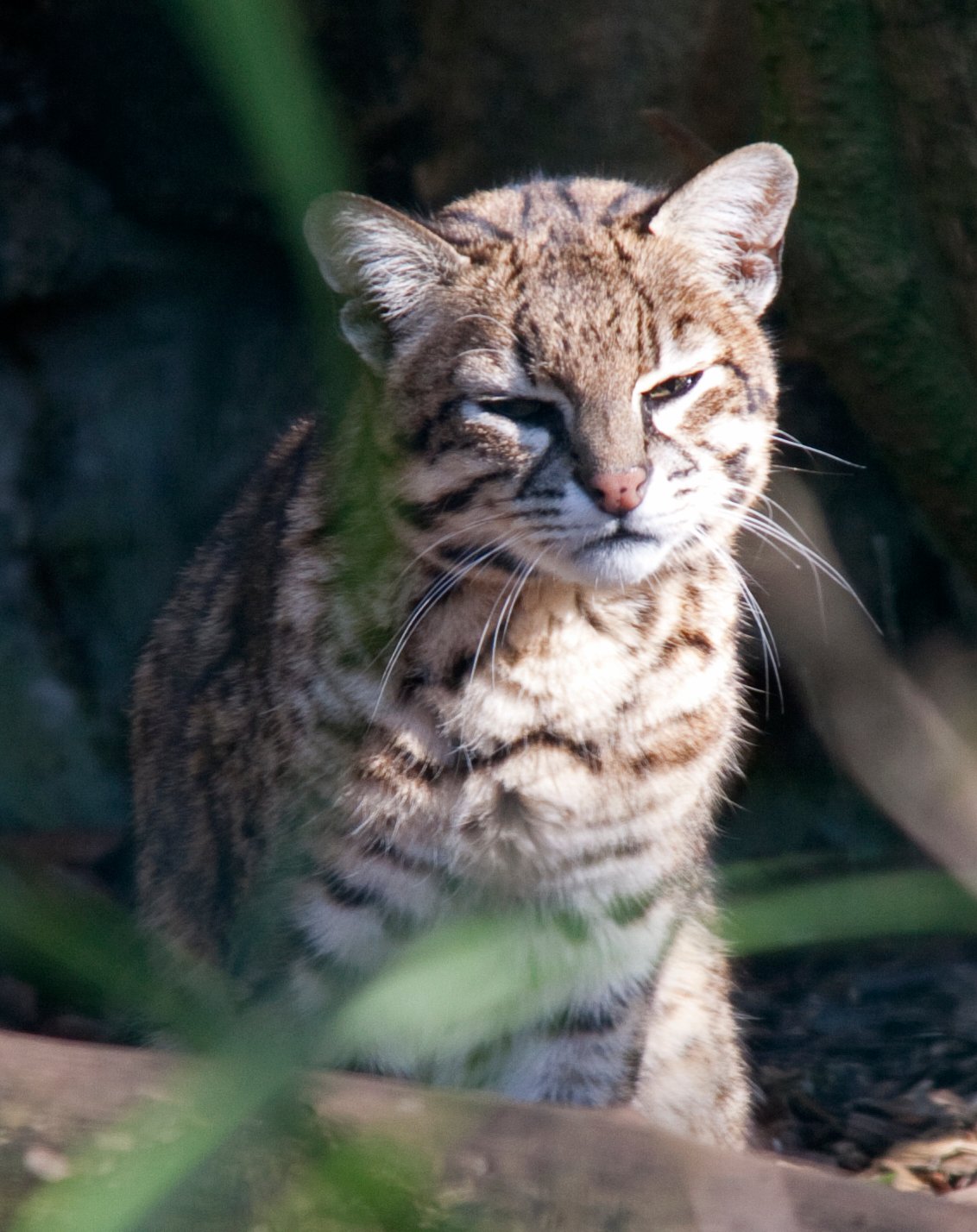
This small but fierce wildcat thrives in the scorching grasslands and scrub of South America, where survival takes both stealth and strategy. Geoffroy’s cats are primarily nocturnal, using the cooler nighttime hours to hunt and roam while avoiding the intense daytime heat. Their pale, spotted coats not only offer perfect camouflage in dry grasses but also help reflect the sun’s rays during the day. Don’t be fooled by their petite size—these agile felines are masters of heat avoidance and wilderness survival.
Pallas’s Cat: Fluffy but Not Always Cold

Famous for their round, expressive faces and plush fur, Pallas’s cats are built for extremes and can surprisingly endure the heat of Central Asia’s rugged landscapes. To escape the daytime sun, they tuck themselves into cool, rocky crevices and become active during the cooler hours of dawn and dusk. Their dense, luxurious fur isn’t just for surviving frigid winters—it also provides insulation that helps buffer them against sudden spikes in temperature. Adaptable and elusive, these wildcats are perfectly equipped to handle both freezing nights and sweltering days.
Fishing Cat: Wet Feet Beat the Heat
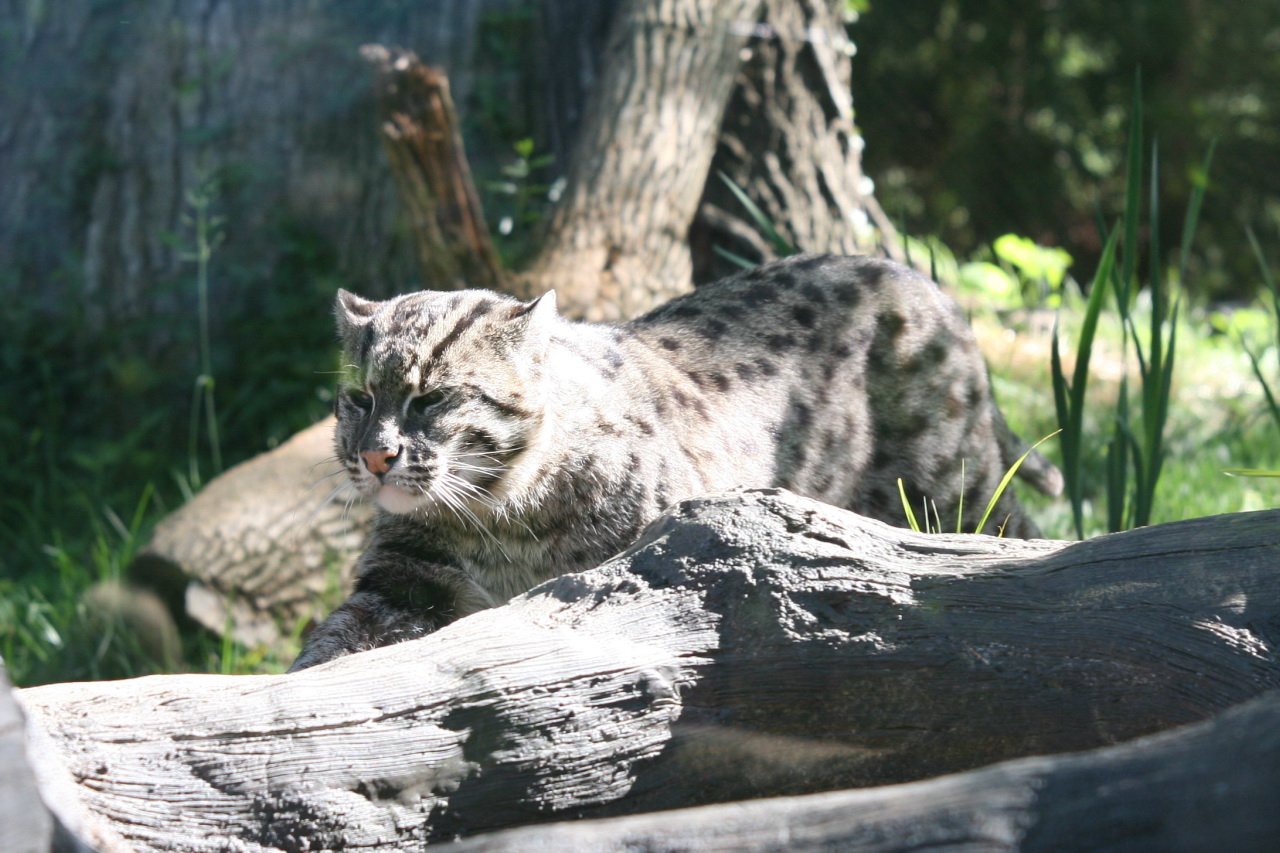
Fishing cats thrive in the steamy marshes, swamps, and mangroves of South and Southeast Asia, where the heat and humidity are intense. Equipped with partially webbed toes, they’re strong swimmers, effortlessly diving into the water to catch fish, crabs, and even frogs—while also beating the heat. Their dense, water-resistant fur and affinity for aquatic life set them apart from most feline species. With their unique skills and cool-headed approach to hot climates, fishing cats truly live up to their name—and their reputation as one of the coolest cats around.
Flat-Headed Cat: Swampy Survivalist
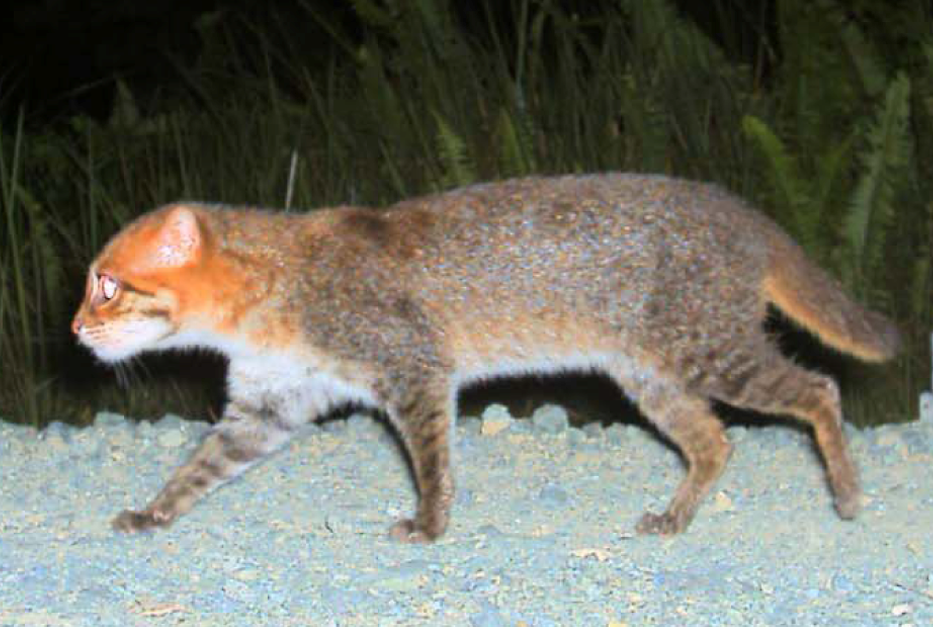
This elusive feline from Southeast Asia is perfectly at home in warm, swampy wetlands where few predators dare to tread. The flat-headed cat’s sleek, water-repellent fur not only sheds moisture with ease but also helps release excess body heat in the humid climate. As a nocturnal hunter, it prowls under the cover of darkness, skillfully dodging the scorching heat of the day. Though shy by nature, its secretive, water-loving lifestyle keeps it cool, calm, and well-adapted to its steamy surroundings.l!
Black-Footed Cat: Tiny Cat, Tough Climate
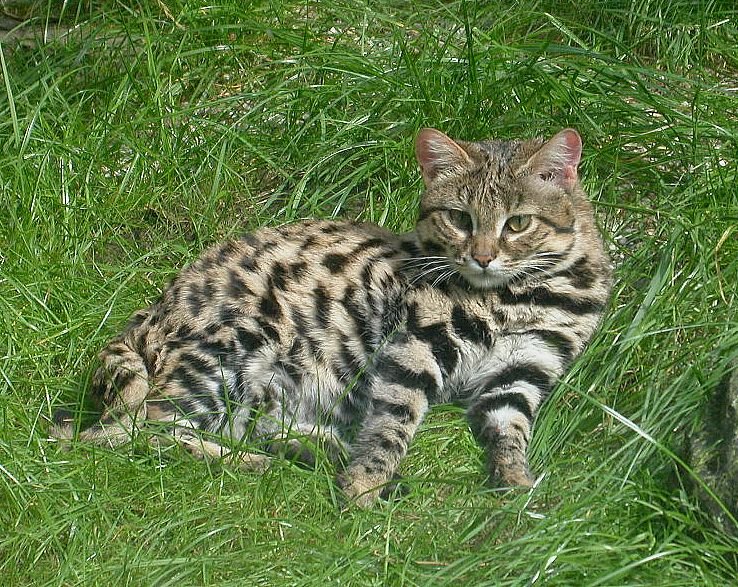
Africa’s black-footed cat may be one of the tiniest wildcats on the continent, but it’s a master of surviving the savanna’s relentless heat. By day, it takes refuge in abandoned burrows or shaded thickets, staying hidden from the scorching sun. When night falls, this fierce little predator emerges under the moonlight to hunt, taking full advantage of cooler temperatures. Small but fearless, the black-footed cat is a stealthy, heat-smart survivor built for life in the harshest environments.
Rusty-Spotted Cat: Mini Marvel in the Warmth

One of the world’s tiniest wildcats, the rusty-spotted cat makes its home in the steamy forests of India and Sri Lanka, where staying cool is key to survival. During the hottest parts of the day, it retreats into tree hollows or hides in thick foliage, using nature’s shade to escape the heat. Its petite size means it heats up quickly in the sun—but also cools down just as fast, giving it an edge in hot, humid climates. Agile, elusive, and perfectly adapted, this miniature marvel is a true forest heat-dodger.
Snow Leopard: Surprising Sun Seeker

Despite their chilly name, snow leopards are no strangers to sunshine, often seen lounging on sunlit, rocky ledges high in the mountains. Their thick, pale coats not only provide insulation against the cold but also reflect sunlight, helping regulate body temperature during warmer daylight hours. Their oversized, fur-covered paws act like natural boots, allowing them to tread comfortably on both snowy slopes and sun-heated stone. With their high-altitude adaptations and sun-smart features, snow leopards are perfectly equipped for life where ice and heat meet.
Margay: Agile Aerialist of Warm Forests
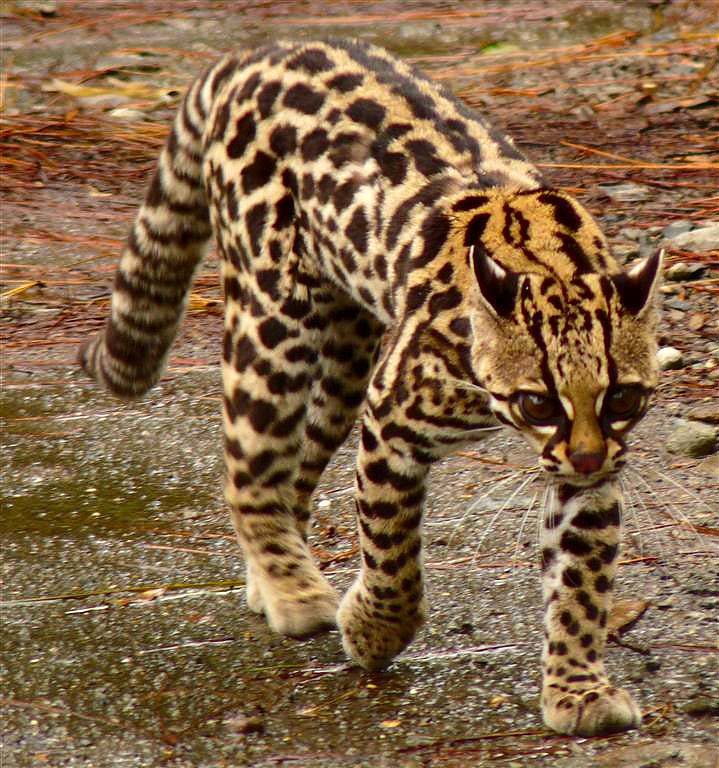
Margays are agile acrobats of the warm, dense forests of Central and South America, using their oversized eyes and uniquely flexible ankles to leap and twist effortlessly through the treetops. These nocturnal hunters avoid the tropical sun by being most active at night, when the air is cooler and the jungle comes alive. Their beautifully spotted coats not only provide excellent camouflage among leaves and shadows but also help them stay cool in the humid heat. With grace, stealth, and heat-savvy habits, margays are true masters of the canopy.
Pampas Cat: Sun-Baked South American Specialist
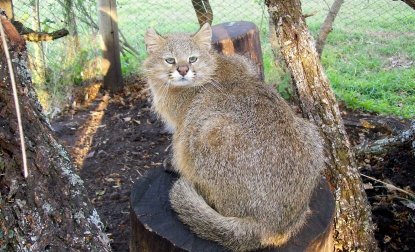
This elusive feline roams the vast, sun-drenched grasslands and open plains of South America, blending seamlessly into the golden landscape. Pampas cats sport a thick, pale coat that not only offers camouflage but also reflects the sun’s rays, helping them stay cool under intense heat. Most active during the cooler hours of dawn and dusk, they skillfully avoid the harsh midday sun like seasoned survivalists. With their stealthy movements and heat-adapted features, Pampas cats are perfectly equipped for life under the open sky.
Chinese Desert Cat: Sandy-Coated Survivor
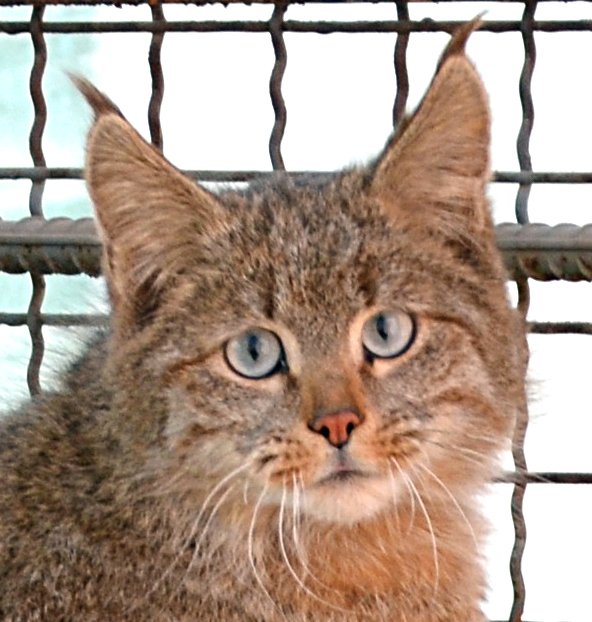
Endemic to the rugged mountains and arid deserts of China, the elusive Chinese desert cat is perfectly adapted to its harsh, sun-scorched environment. Its sandy-grey coat offers both camouflage and heat reflection, allowing it to blend seamlessly into rocky terrain and sun-bleached soil. Primarily nocturnal, it escapes the brutal daytime heat by sheltering in cool burrows, emerging only when the desert air begins to cool at dusk. With stealth, resilience, and desert-honed instincts, this rare feline is a true ghost of the highlands.
Which of these heat-proof cats would you want to spot in the wild?

Suhail Ahmed is a passionate digital professional and nature enthusiast with over 8 years of experience in content strategy, SEO, web development, and digital operations. Alongside his freelance journey, Suhail actively contributes to nature and wildlife platforms like Feline Fam, where he channels his curiosity for the Feline into engaging, educational storytelling.
With a strong background in managing digital ecosystems — from ecommerce stores and WordPress websites to social media and automation — Suhail merges technical precision with creative insight. His content reflects a rare balance: SEO-friendly yet deeply human, data-informed yet emotionally resonant.
Driven by a love for discovery and storytelling, Suhail believes in using digital platforms to amplify causes that matter — especially those protecting Earth’s biodiversity and inspiring sustainable living. Whether he’s managing online projects or crafting wildlife content, his goal remains the same: to inform, inspire, and leave a positive digital footprint.






